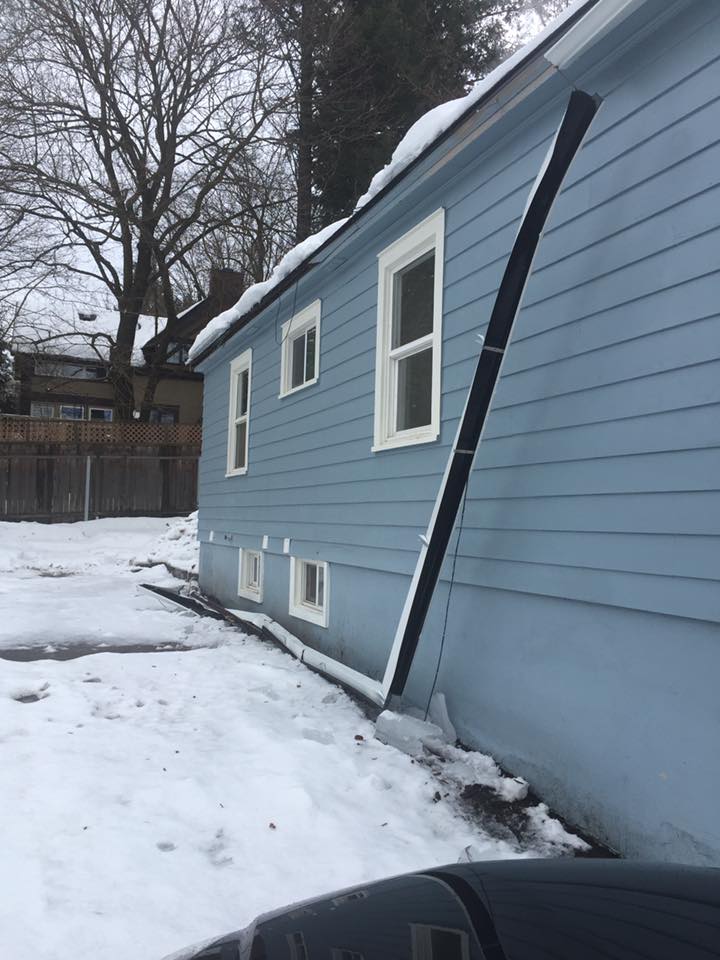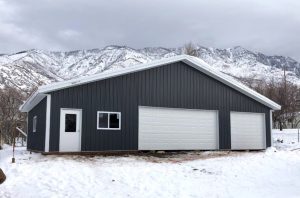One of my Facebook friends, Scott, has recently been doing a house remodel on a home he purchased in Spokane, Washington. He has been good about posting progress photos, until today when he posted a non-progress photo.
 The casual article skimmer will notice the photo and perhaps think this “gutter on the ground” issue must be due to installer error. Having been down this very same road, I can reasonably assure you, kind reader, to this being a problem of the roof itself.
The casual article skimmer will notice the photo and perhaps think this “gutter on the ground” issue must be due to installer error. Having been down this very same road, I can reasonably assure you, kind reader, to this being a problem of the roof itself.
When I first built my small garage at our Newman Lake, Washington home, I had gutters put on it. The gutter installer would only guarantee his work, if we had a snow retention system installed on our roof.
You can bone up on snow retention systems herehttps://www.hansenpolebuildings.com/2017/01/snow-sliding-off-roof/
Because there has been an inordinate amount of snow in various areas of the United States the past few years, I will probably begin to sound like a nag when I repeatedly discuss not only proper snow load design, but also proper design for keeping the snow where it belongs – on the roof, not falling off and injuring anyone.
In a recent Spokesman-Review article (read the full article here: https://www.spokesman.com/stories/2017/feb/05/snow-falls-off-roof-of-selkirk-lodge-causing-minor/) snow sliding off from a metal roofed lodge injured several and resulted in at least one ambulance ride. With the proper snow retention system in place, the slide off event would probably never have occurred.
Why aren’t snow retention systems required? Especially on metal roofs?
The first reason is always down to “cost”. People selling and constructed buildings have an inane fear of trying to discuss added investment, which adds to the price.
If it helps to protect an innocent person from being injured or worse killed – it was a cheap investment. As a consumer, just explain the benefit to me and I am a believer.
The second reason is because it is not a requirement of the Building Codes. I am certainly no fan of government intervention however the Codes at least form a minimum framework from which buildings can be designed and built so as to prevent loss of life or injury. Hopefully this small portion of the Codes will be addressed in the future.
Meanwhile, it is up to me to inform – an informed new building owner is the happiest one, as they ended up getting what truly works best for them over the long run.
 Beth Hungiville, executive director of the Lightweight Structures Association, said four of the membrane-style buildings collapsing in seven years is far from normal.
Beth Hungiville, executive director of the Lightweight Structures Association, said four of the membrane-style buildings collapsing in seven years is far from normal.





